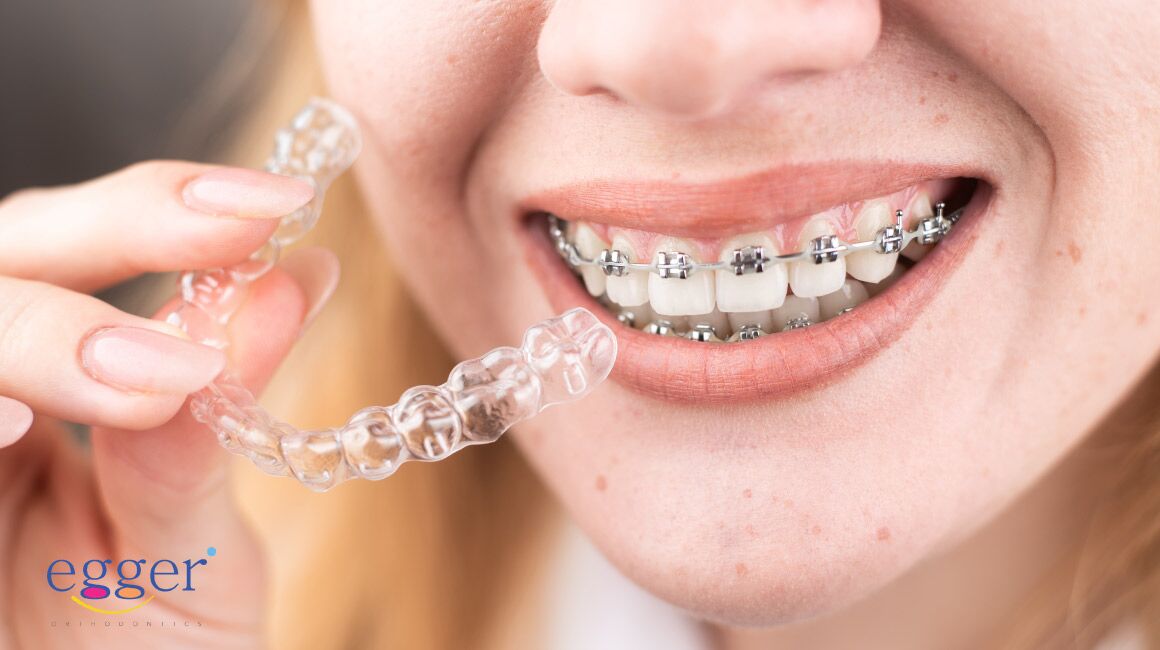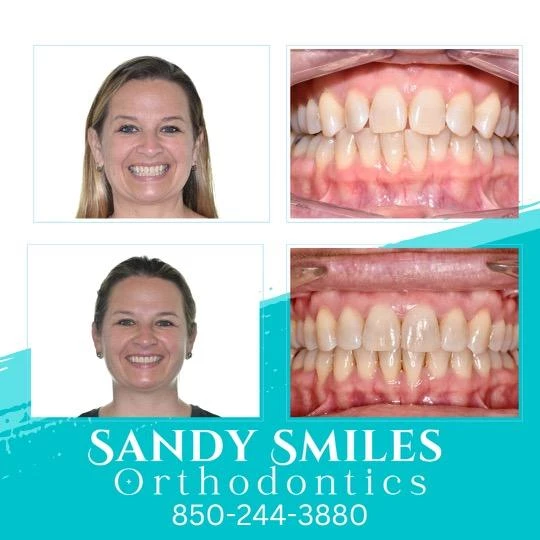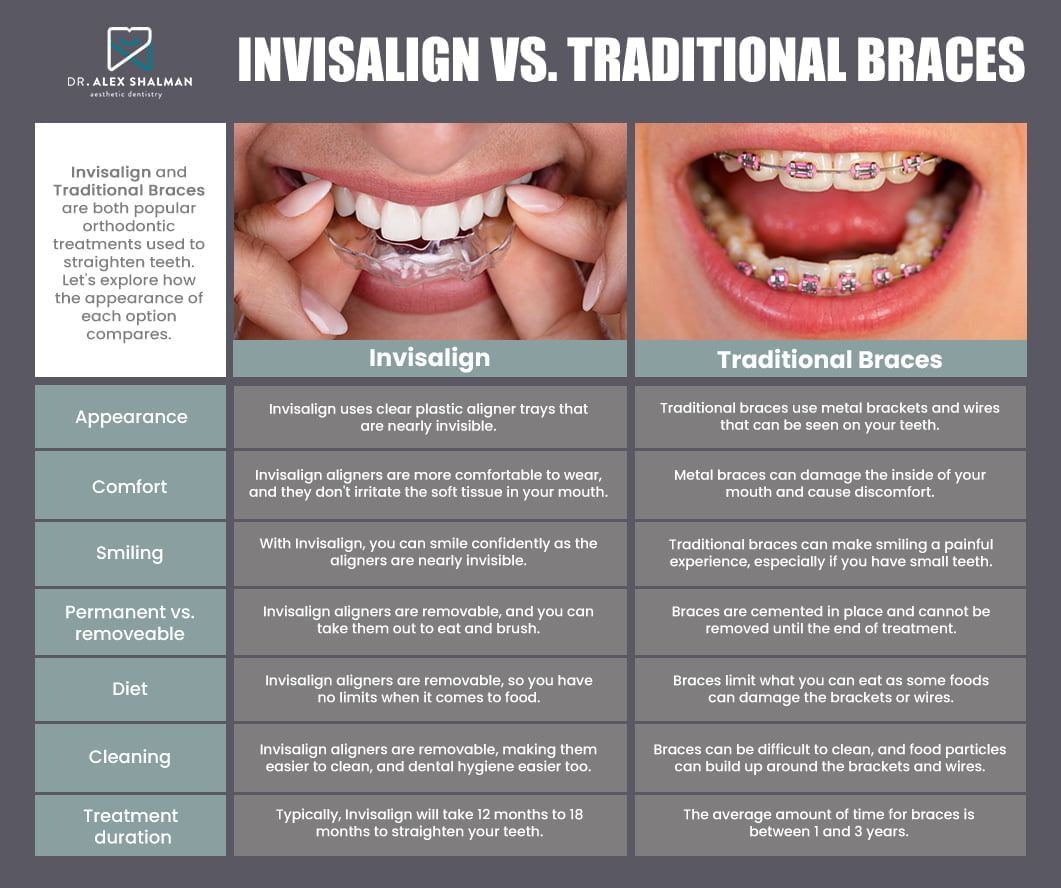Discover the Benefits of Invisalign for a Perfect Smile Change
Discover the Benefits of Invisalign for a Perfect Smile Change
Blog Article
Invisalign vs. Traditional Dental braces: Which Option Is Right for You?
When taking into consideration orthodontic therapy, the choice in between Invisalign and conventional dental braces offers numerous essential aspects that merit mindful assessment. Invisalign provides a very discreet alternative with detachable aligners, while standard dental braces give an extra visible yet reliable option for serious misalignment. Each choice encompasses distinct advantages and disadvantages related to aesthetic appeals, comfort, treatment period, and cost. Understanding these subtleties is critical for making a notified decision that lines up with your personal choices and lifestyle. The inquiry stays: which option will finest satisfy your orthodontic demands and assumptions?
Summary of Treatment Choices

In contrast, typical braces contain metal braces and cables that are bonded to the teeth. This technique applies continuous stress over time to accomplish positioning. While effective for complex orthodontic issues, conventional dental braces call for regular check outs for modifications and can pose challenges in preserving dental health due to the difficulty of cleaning up about braces and cords.
Both options have their benefits, and the choice usually depends upon specific dental conditions, lifestyle choices, and person conformity. Ultimately, seeking advice from an orthodontic professional is crucial for figuring out the most suitable therapy strategy tailored to specific needs. Understanding the nuances of each alternative can dramatically affect the overall success of orthodontic therapy.
Visual Factors To Consider
A substantial aspect influencing the choice between Invisalign and traditional dental braces is the aesthetic charm each therapy uses. Invisalign aligners are crafted from clear plastic, making them basically invisible when put on.
On the other hand, conventional braces contain metal brackets and cables, which can be extra noticeable. While improvements in orthodontic innovation have actually caused the development of smaller sized braces and colored elastics, conventional dental braces still maintain an even more conspicuous profile. For some individuals, the presence of dental braces might hinder them from seeking essential treatment.
Eventually, the selection between Invisalign and standard braces might depend upon individual choices relating to visual appeals. Individuals who focus on discernment typically favor Invisalign, while those who are less worried regarding visibility might go with traditional braces. Recognizing the aesthetic effects of each choice is vital for making a notified decision that straightens with one's lifestyle and preferences.
Comfort and Convenience

In regards to benefit, Invisalign aligners are detachable, allowing patients to appreciate their favorite foods without limitation and keep optimum oral health. Brushing and flossing are simplified, as the aligners can be gotten throughout these routines, whereas traditional dental braces call for careful navigating this page around brackets and cords.
In contrast, conventional dental braces require routine changes, making them much less convenient Your Domain Name for those with active routines. On the whole, the convenience and convenience of Invisalign make it an attractive option for numerous individuals seeking orthodontic therapy.
Therapy Duration and Performance
While both Invisalign and standard dental braces work in fixing oral misalignments, the duration of therapy can differ substantially between the two alternatives. Commonly, Invisalign therapy can take anywhere from 12 to 18 months, depending upon the intricacy of the situation. The clear aligners work by progressively shifting teeth right into their preferred settings, and routine follow-ups with an orthodontist assistance make sure progress continues to be on course.
On the other hand, typical dental braces commonly need a longer commitment, usually ranging from 18 months to 3 years. This is due to their set nature and the use of brackets and cables, which can be a lot more efficient for extreme imbalances and complex instances (Invisalign). The therapy efficiency of traditional braces is well-documented, as they enable for precise modifications and better control over tooth motion
Ultimately, the choice between Invisalign and standard braces might depend have a peek at this website upon both the expected therapy duration and the details oral concerns at hand. Consulting with an orthodontist is crucial, as they can give customized referrals based upon specific needs, ensuring the picked approach lines up with preferred durations and end results.
Cost Contrast and Insurance Coverage Choices
Expense plays a substantial duty in the decision-making procedure for people taking into consideration orthodontic therapy, whether choosing Invisalign or standard dental braces. Usually, the cost of Invisalign ranges from $3,000 to $8,000, while standard dental braces usually set you back between $2,000 and $6,000. Elements influencing these prices consist of the intricacy of the situation, the period of treatment, and geographical place.
Lots of dental insurance coverage plans offer partial coverage for orthodontic treatments, however the specifics can differ widely. Typically, traditional braces might be a lot more frequently covered by insurance strategies compared to Invisalign, which some insurance firms categorize as a cosmetic procedure.
Additionally, numerous orthodontic practices use adaptable layaway plan, making both treatment choices extra obtainable. Patients should make inquiries regarding possible funding alternatives and price cuts for in advance settlements. Reviewing the total cost, consisting of insurance advantages and layaway plan, is crucial for making an educated choice that straightens with both aesthetic preferences and spending plan considerations.

Final Thought
In recap, the selection between Invisalign and standard braces rests on multiple variables, including aesthetic preferences, convenience, treatment period, and price. Invisalign offers a discreet, removable choice that facilitates oral health and dietary versatility, while conventional braces may be preferable for complicated dental concerns and commonly come at a lower cost factor. Ultimately, appointment with an orthodontist is necessary to assess specific conditions and determine the most proper treatment option for accomplishing ideal oral positioning.
When taking into consideration orthodontic therapy, the choice in between Invisalign and standard braces provides several important variables that merit cautious evaluation.Contrasting Invisalign and standard braces reveals unique therapy choices for orthodontic modification.While both Invisalign and typical dental braces are efficient in dealing with dental imbalances, the period of treatment can differ dramatically between the two choices.Price plays a considerable duty in the decision-making process for individuals taking into consideration orthodontic treatment, whether choosing for Invisalign or conventional braces.In summary, the selection between Invisalign and standard braces hinges on multiple elements, including aesthetic preferences, comfort, treatment period, and expense.
Report this page